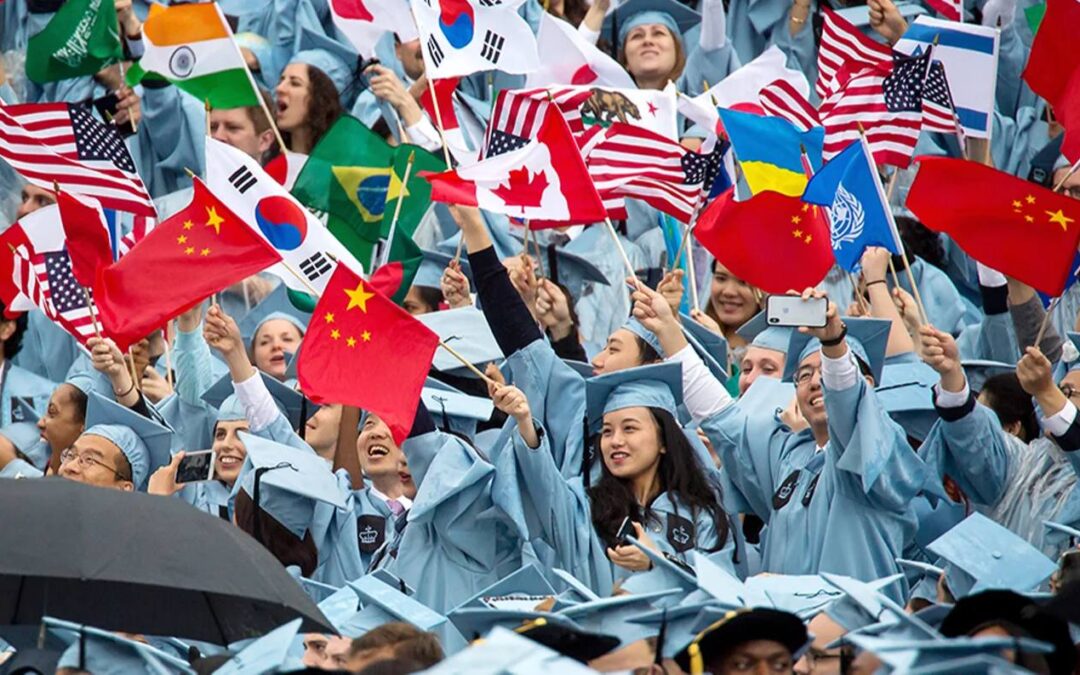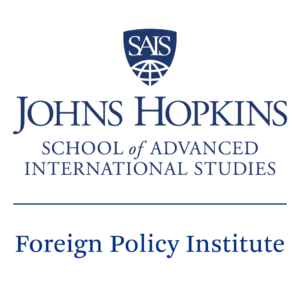By Pinxian Du
More than one million international students live and study in college towns and universities across the United States. In the academic year 2018-19, Chinese students ranked number one, accounting for more than ⅓ of that total. Chinese students have held the top spot since the 2009/10 academic year. The U.S remains the number one higher education destination, accounting for more than one in five foreign students worldwide.
International students are attracted to the wide range of high-quality higher education institutions in the United States. Meanwhile, the universities and college towns prize international students for the diversity they bring, as well as the hard currency they pour into tuition and living expenses. All told, international students contributed $45 billion to the US economy in 2018-19, according to the U.S. Department of Commerce.
Perhaps most critically, international students created or supported nearly 460,000 jobs during the 2018/19 academic year, according to NAFSA, the association of international educators.
So, where do the other two-thirds of international students come from? And where are they studying? These three Top Ten lists offer a breakdown of the countries of origin of international students, and the states and the universities that host most of them.
| The top 10 countries of origin of international students in US (2018/19) | ||
| Name of Country | # of students from that country in 2018/19 | the amount of expenditure students spent in 2018/19 |
| China | 369,548 | $14,913,000,000 |
| India | 202,014 | $8,137,000,000 |
| South Korea | 52,250 | $2,191,000,000 |
| Saudi Arabia | 37,080 | $1,751,000,000 |
| Canada | 26,122 | $1,126,000,000 |
| Vietnam | 24,392 | $999,000,000 |
| Taiwan | 23,369 | $902,000,000 |
| Japan | 18,105 | $656,000,000 |
| Brazil | 16,059 | $558,000,000 |
| Mexico | 15,299 | $627,000,000 |
Source: IIE, Open Door Program Report
- In the academic year of 2018/19, the total number of international students in the United States increased by 0.05%, but the growth of new international student enrollment decreased by 0.9%.
- In the academic year 2018/19, 52% of the total amount of international students hailed from from China and India.
- In 2005, the late King Abdullah Bin Abdulaziz Al Saud of Saudi Arabia launched the King Abdullah Scholarship Program (KASP), and supported 90% (approximately 200,000) of Saudi students studying abroad, including full tuition, insurance, living expenses, and annual airfare. After the program, the group of Saudi Arabia students in US witnessed dramatic growth by increasing 128.7% in the following year (2006/07).
- Since 2001, the population of international students enrolled in higher education courses away from their home of origin has increased from 2.1 million to 5.3 million. However, the percentage of these students studying in the US has dropped from 28% to 21%.
- In the last 10 years, international student enrollment in the US saw extraordinary increases from developing and growing economies in the world, including:
- Vietnam, with a 90% increase in students between 2009 and 2019
- Brazil, with an 83% increase in students between 2009 and 2019
- Nigeria, with a 114% increase in students between 2009 and 2019
- Bangladesh, with a 205% increase in students between 2009 and 2019
| Top 10 states that have the most international students (2018/19) | ||
| Name of State | # of international students that state hosted | the economic benefits the state received |
| California | 161,693 | $6,818,109,371 |
| New York | 124,277 | $5,311,151,048 |
| Texas | 81,893 | $2,212,543,705 |
| Massachusetts | 71,098 | $3,213,960,406 |
| Illinois | 53,724 | $1,946,536,716 |
| Pennsylvania | 51,818 | $2,069,365,940 |
| Florida | 45,957 | $1,585,311,560 |
| Ohio | 37,314 | $1,277,034,932 |
| Michigan | 33,236 | $1,193,677,673 |
| Indiana | 29,083 | $985,429,644 |
Source: IIE, Open Door Program Report
- In 2019, education ranks 4th among US service sector exports.
- International students created or supported nearly 460,000 jobs during the 2018/19 school year. In California, the state which hosted the most international students in 2018/19, approximately 2,900 jobs directly supported as a result of international student enrollment and 5,800 jobs were indirectly supported.
- 1 out of 3 international students studies in CA, NY, of TX.
- Between 2016 and 2019, the impact on the US economy from declining international student enrollment was estimated to be -$11.8 billion, affecting nearly 65,000 jobs.
| Top 10 universities hosting the most international students (2018/19) | |||
| Name of university | Institution type | Location | # of international students enrolled |
| New York University | private | New York City, NY | 19,605 |
| University of Southern California | private | Los Angeles, CA | 16,340 |
| Northeastern University | private | Boston, MA | 16,075 |
| Columbia University | private | New York City, NY | 15,897 |
| University of Illinois, Urbana-Champaign | public | Urbana-Champaign, IL | 13,497 |
| Arizona State University | public | Tempe, AZ | 13,324 |
| University of California, Los Angeles | public | Los Angeles, CA | 11,942 |
| Purdue University | public | West Lafayette, IN | 10,943 |
| University of California, San Diego | public | San Diego, CA | 10,652 |
| Boston University | private | Boston, MA | 10,598 |
Source: IIE, Open Door Program Report
- Though there are more than 4,000 colleges and universities in the U.S. – depending on how those institutions are counted – 70% of international students tend to study at only about 200 schools; those students are primarily concentrated in Texas, California and New York.
- Foreign students who made up 12% of the total student population contributed nearly 30% of total tuition revenue at public universities.
- International students pay nearly twice as much in tuition in the US as native students.
- Open Doors 2019 reports that about 62 percent of all international students receive the majority of their funds from sources outside of the United States, including personal and family sources as well as assistance from their home country governments or universities.
- The expenditure of one international student is 53% directly on higher education, 19% on accommodation, 12% on dining, and 10% on retail.
- International students at community colleges contributed $2.6 billion to the U.S. economy and supported more than 13,970 jobs during the 2018/19 academic year. These economic benefits represent a 3% decrease in dollars contributed, and a 7.8% decrease in jobs created or supported when compared to the previous year.


